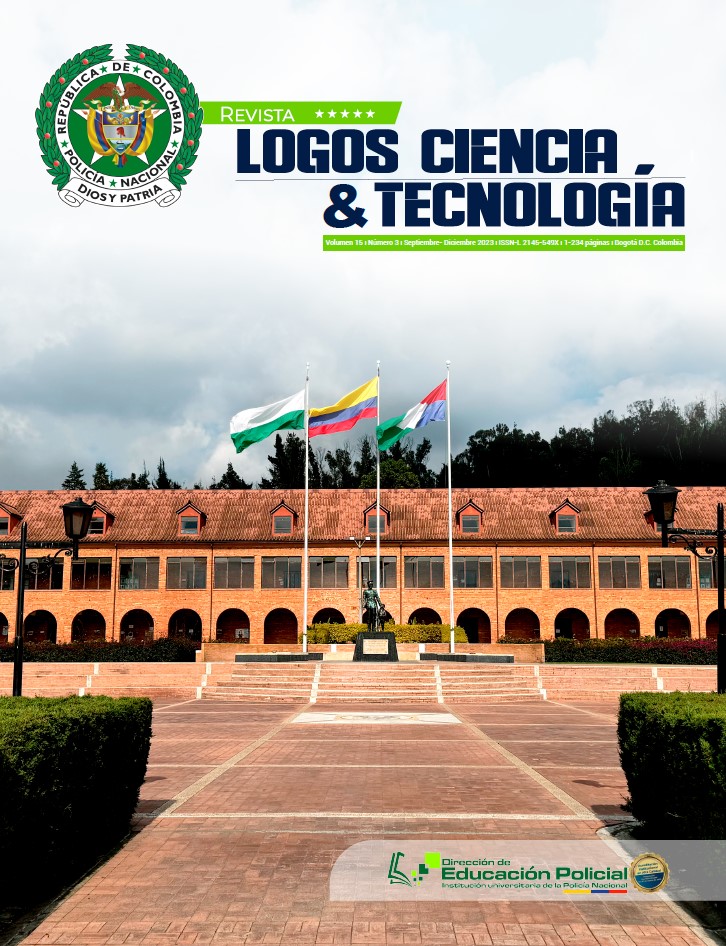Optimisation of police resources in commercial areas of Bogotá: geospatial and strategic analysis of vulnerabilities
DOI:
https://doi.org/10.22335/rlct.v16i3.1988Keywords:
Commerce, Crime, Economic development, Crime prevention, Government policyAbstract
One of the most significant challenges facing society is the development of effective mechanisms that can ensure the security of citizens while facilitating comprehensive economic and social advancement. This study identifies the commercial areas of Bogotá, Colombia, which are critical points in terms of security, and proposes a strategic allocation of police resources in order to optimise their coverage and response times. The methodological process was executed in accordance with the guidelines set forth in the Cross-Industry Standard Process for Data Mining. Geospatial analysis techniques were employed, including the Density-Based Spatial Clustering of Applications with Noise (DBSCAN) algorithm to identify commercial zones and the graph theory to model the security network. Additionally, data from the Special Administrative Unit of Land Registry and the locations of National Police stations and precincts were utilised. The results demonstrate the identification of 241 commercial zones in Bogotá and propose a strategic allocation of police resources based on degree centrality and a stable matching algorithm. The integration of related techniques allowed for the generation of an innovative approach that combines the accurate identification of critical commercial zones with a data-driven optimisation of police resources. This not only increases the understanding of security dynamics in urban commercial areas, but also provides a robust public safety decision-making tool for the city.
Downloads
References
Alegría-Arcos, M., Barbosa, T., Sepúlveda, F., Combariza, G., González, J., Gil, C., Martínez, A., & Ramírez, D. (2022). Network pharmacology reveals multitarget mechanism of action of drugs to be repurposed for COVID-19. Frontiers in Pharmacology, 13, 952192. https://doi.org/10.3389/fphar.2022.952192
Auten, J. H. (1981). Response time - What’s the rush? Law and Order, 29(11), 24-27, 80038. https://www.ojp.gov/ncjrs/virtual-library/abstracts/response-time-whats-rush
Bihari, A., & Pandia, M. (2015). Eigenvector centrality and its application in research professionals’ relationship network. 1st International Conference on Futuristic Trends in Computational Analysis and Knowledge Management, ABLAZE 2015. https://doi.org/10.1109/ABLAZE.2015.7154915
Cámara de Comercio de Bogotá. (2017). Encuesta de Percepción y Victimización. http://www.ccb.org.co/Transformar-Bogota/Seguridad/Observatorio-de-Seguridad/
Chapman, P. (2000). CRISP-DM 1.0: Stepby- step data mining guide. https://api.semanticscholar.org/CorpusID:59777418
DANE (Departamento Administrativo Nacional de Estadística). (2016). Encuesta de Convivencia y Seguridad Ciudadana. https:// www.dane.gov.co/index.php/estadisticaspor-tema/seguridad-y-defensa/encuestade- convivencia-y-seguridad-ciudadanaecsc/ecsc-2015
Farooq, O., & Mertzanis, C. (2017). Media independence and crime as an obstacle to firms’ business operations. Research in International Business and Finance, 41, 79-89 https://doi.org/10.1016/j.ribaf.2017.04.025
Gale, D., & Shapley, L. S. (1962). College admissions and the stability of marriage. American Mathematical Monthly, 69(1), 9-15. https://doi.org/10.1080/00029890.1962.11989827
Gélvez, J. D. (2018). ¿Cuáles determinantes se relacionan con la percepción de inseguridad? Un análisis estadístico y espacial para la ciudad de Bogotá, D. C. Revista Criminalidad, 61(1), 69-84.
Gómez, L. J. (2019). Determinación de zonas vulnerables en cuanto a la inseguridad nocturna del espacio público en el área urbana de Bogotá mediante aplicación del método de interpolación IDW [Tesis de posgrado, Universidad Militar Nueva Granada]. Repositorio Unimilitar.
Google Developers. (2024). Distance Matrix API overview. https://developers.google.com/maps/documentation/distance-matrix/overview
Hansen, D. L., Shneiderman, B., & Smith, M. A. (2011). Calculating and visualizing network metrics. In D. L.
Hansen, B. Shneiderman, & M. A. Smith (Eds.), Analyzing social media networks with NodeXL (pp. 69-78). Morgan Kaufmann. https://doi.org/10.1016/B978-0-12-382229-1.00005-9
Oficina de Análisis de Información y Estudios Estratégicos. (2023). Boletín mensual de indicadores de seguridad y convivencia - Bogotá: febrero del 2023. Secretaría Distrital de Seguridad, Convivencia y Justicia.
Parente, R. M., & Valdés, R. (2023). América Latina puede estimular el crecimiento económico al reducir la delincuencia. Fondo Monetario Internacional. https://www.imf.org/es/Blogs/Articles/2023/12/18/latinamerica-can-boost-economic-growth-byreducing-crime
Policía Nacional de Colombia. (2009). Manual para el Comando de Atención Inmediata, CAI. Dirección General Oficina de Planeación. Imprenta Nacional de Colombia. https://www.camara.gov.co/sites/default/files/2020-09/RTA.ANEXO_.MINDEFENSA.MANUAL.ESTATUTO%20DE%20OPOSICIÓN.pdf
Policía Nacional de Colombia. (2024). Directorio de la Policía Nacional de Colombia. https:// www.policia.gov.co/directorio?page=65
Probogotá Región. (2023). Informe anual de seguridad 2022. Probogotá Región. https://www.probogota.org/wp-content/uploads/2023/10/Informe-Anual-de- Seguridad-2022.pdf
Rueda, J. P. (2020, 9 de julio). Policía Nacional confirma cambios en modelo de seguridad ciudadana. El Tiempo. En A. L. Méndez (subeditora). https://www.eltiempo.com/justicia/delitos/seguridad-ciudadana-policia-cambia-modelo-de-cuadrantes-515800
Ruiz-Vásquez, J. C., & Páez, K. (2016). Balance de estrategias de seguridad para zonas críticas en Bogotá y Medellín. URVIO - Revista Latinoamericana de Estudios de Seguridad, 19, 53. https://doi.org/10.17141/urvio.19.2016.2391
Scheurer, J., & Porta, S. (2006). Centrality and connectivity in public transport networks and their significance for transport sustainability in cities. En World Planning Schools Congress, Global Planning Association Education Network (13-16 de julio de 2006).
Unidad Administrativa Especial de Catastro Distrital. (2023). Destino económico predominante. Datos abiertos de Bogotá. https://datosabiertos.bogota.gov.co/dataset/destino-economico-predominante
Yu, X., Ding, Y., Wan, W., & Thuillier, E. (2014). Explore hot spots of city based on DBSCAN algorithm. International Conference on Audio, Language and Image Processing (pp. 588-591). https://doi.org/10.1109/ICALIP.2014.7009862
Zhang, J., & Luo, Y. (2017). Degree centrality, betweenness centrality, and closeness centrality in social network. In Proceedings of the 2nd International Conference on Modelling, Simulation and Applied Mathematics (MSAM 2017). Atlantis Press. https://doi.org/10.2991/msam-17.2017.68
Downloads
Published
Issue
Section
Categories
License
Copyright (c) 2024 Revista Logos Ciencia & Tecnología

This work is licensed under a Creative Commons Attribution-NonCommercial-NoDerivatives 4.0 International License.
This journal provides free and immediate access to its content (https://creativecommons.org/licenses/by/4.0/legalcode#languages), under the principle that making research available to the public free of charge supports greater global knowledge exchange. This means that the authors transfer the Copyrights to the journal, so that the material can be copied and distributed by any means, as long as the authors’ recognition is maintained, and the articles are not commercially used or modified in any way.
































